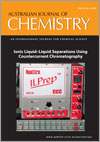
Australian Journal of Chemistry
Volume 70 Number 8 2017
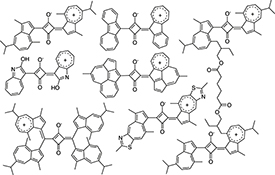
The first azulenyl squaraine dye was reported in 1966, but little activity in the scientific literature has given the impression that they remain unexplored. However, much has been recorded in the patent literature and it is the purpose of this review to bring this record to the attention of researchers.
CH17080Recent Developments on Ultrasound-Assisted Synthesis of Bioactive N-Heterocycles at Ambient Temperature
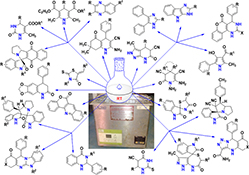
The present review summarises the latest developments on the ultrasound-assisted synthesis of biologically relevant N-heterocycles at ambient temperature.
CH16507Construction of Z-Scheme Bi2WO6/g-C3N4 Heterojunction Photocatalysts with Enhanced Visible-Light Photocatalytic Activity
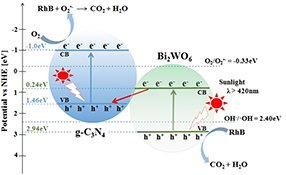
The photocatalytic reaction of prepared Bi2WO6/g-C3N4 composite materials followed a direct solid-state Z-scheme mechanism, which facilitated charge transfer and effectively reduces the recombination of photoinduced electrons and holes, resulting in an enhanced photodegradation efficiency under visible light irradiation.
CH17038Enhancing the Magnetic–Luminescent Properties of Fe3O4@Y2O3:Eu3+ Core–Shell Bifunctional Particles Using Li+ Doping
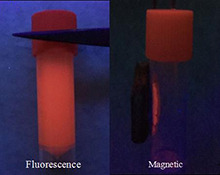
Bifunctional magnetic–luminescent Fe3O4@Y2O3:Eu3+, Li+ composite particles were prepared with Y2O3 co-doped with Eu3+ and Li+ ions as a shell to enhance their luminescence intensity and saturation magnetisation through a urea homogeneous precipitation method.
CH17064Influence of Adsorbent Nature on the Dynamic Headspace Study of Insect Semiochemicals
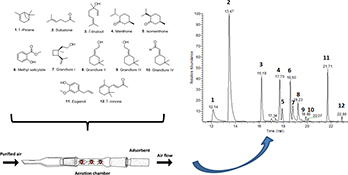
Different adsorbents (Tenax TA, Porapak Q, and Hayesep Q, among others) were evaluated in a headspace dynamic system containing a mixture of insect semiochemicals. The results demonstrated that Porapak Q and Porapak Rxn RP were able to produce similar ratios of compounds to that of a standard solution with the highest recovery yields.
CH16694Synthesis of Self-Assembled Co3O4 Nanoparticles with Porous Sea Urchin-Like Morphology and their Catalytic and Electrochemical Applications
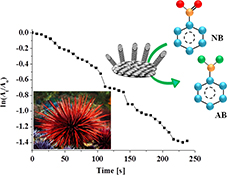
Unique self-assembled nanoparticles with sea urchin-like pointed edges were synthesized by a solvothermal approach. The high value of the apparent rate constant, kapp, is due to the unique morphology of the Co3O4 nanoparticles.
CH17056Tunable Electromagnetic Enhancement of Gold Nanoparticle Arrays
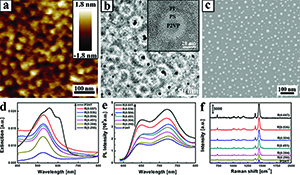
The fluorescence and Raman intensity of poly(3-hexylthiophene) (P3HT)-coated gold nanoparticle arrays with different particle sizes and interparticle distances were enhanced in comparison with pristine P3HT due to electromagnetic field enhancement based on localised surface plasmon resonance (LSPR). The fluorescence and Raman signals of P3HT on gold nanoparticle arrays were gradually enhanced with increasing nanoparticle diameter/interparticle distance ratio.
CH17004Ionic Liquid–Liquid Separations Using Countercurrent Chromatography: A New General-Purpose Separation Methodology
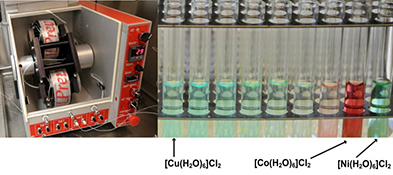
A custom-designed liquid–liquid countercurrent chromatographic instrument (above left), based on the J-type centrifuge, in which at least one phase contains an ionic liquid, is capable of the separation of inorganic (above right), organic, or bio-based materials on the 0.1–10 g scale.
CH16720A Novel Eco-Friendly Scale and Corrosion Inhibitor Modified by β-Cyclodextrin
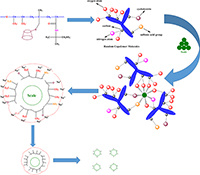
A polymer, β-MEA, was synthesised from β-cyclodextrin (β-CD), 3-chloro-2-methylpropene (MAC), epoxysuccinic acid (ESA), and 2-acrylamido-2-methyl propane sulfonic acid (AMPS). Its structure, molecular weight, thermal stability, inhibition performance, and mechanism were investigated. The results showed that β-MEA achieves better scale and corrosion inhibition efficiencies compared with poly(aspartic acid) (PASP).
CH17076Synthesis, Crystal Structure, and Photoluminescent Properties of a Series of LnIII–CuI Heterometallic Coordination Polymers Based on Cu4I3 Clusters and Ln–ina Rod Units
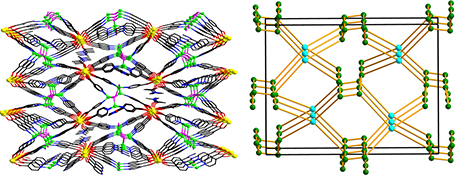
A novel series of 3D LnIII–CuI heterometallic coordination polymers {[Ln2Cu4I3(ina)7(DMA)2]n·nDMA were synthesised by a solvothermal reaction, comprising of inorganic Cu4I3 clusters linked by Ln2(ina)7(DMA) rod units. The luminescent properties of partial compounds have been investigated in detail.
CH17208Selective Fluorescent Detection of Cysteine over Homocysteine and Glutathione by a Simple and Sensitive Probe
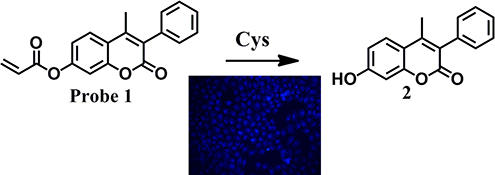
A simple and sensitive fluorescence probe, based on a substituent coumarin as fluorophore and acrylate as recognition site, is able to selectively and quantifiably detect cysteine over other biothiols such as homocysteine and glutathione.



